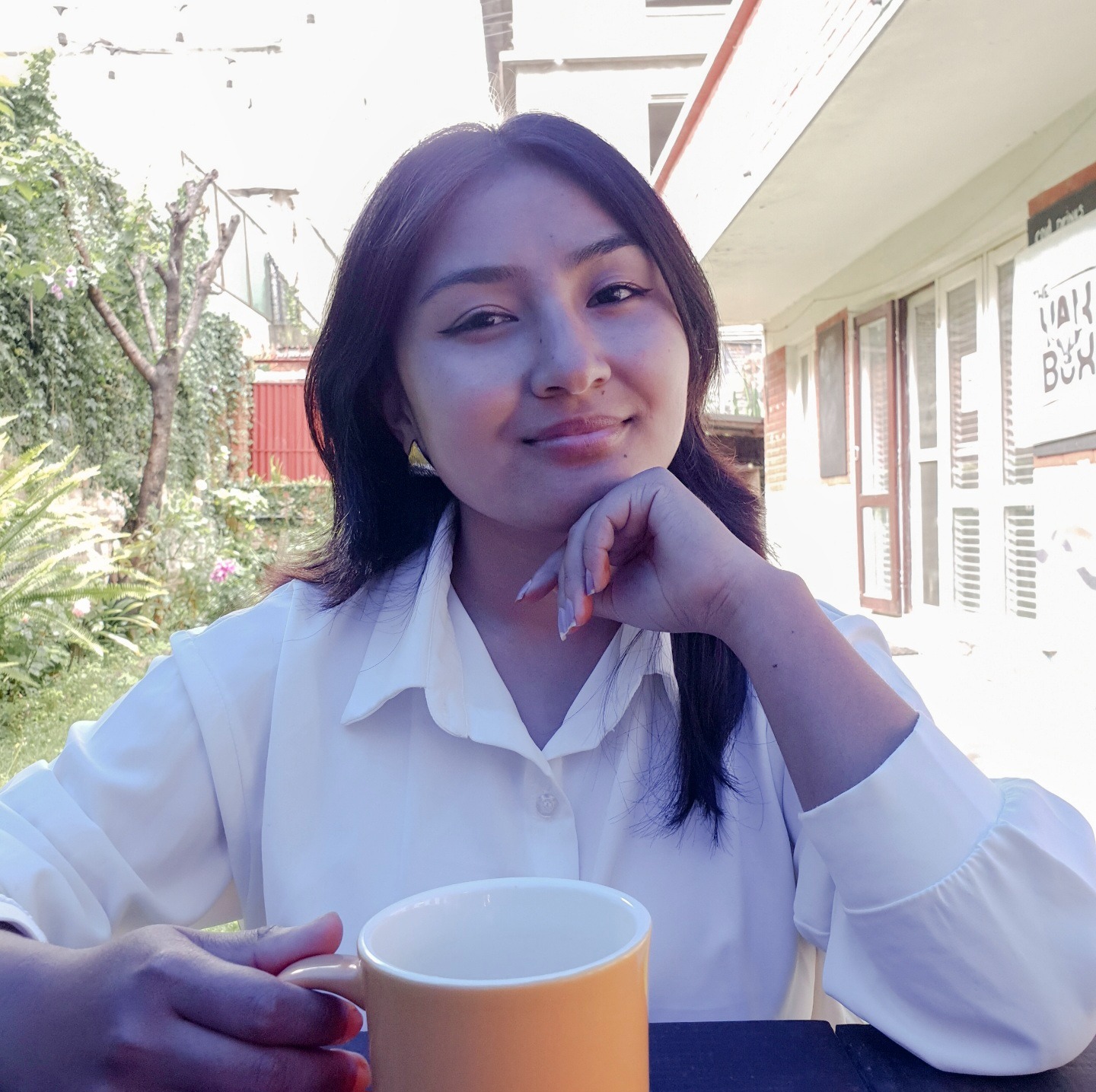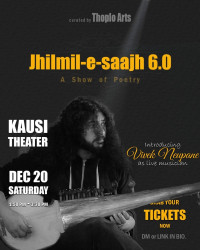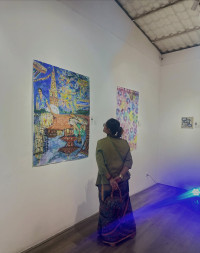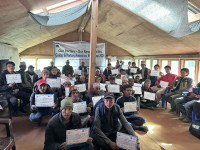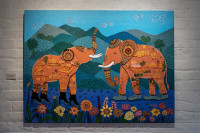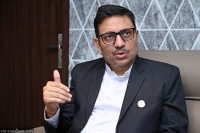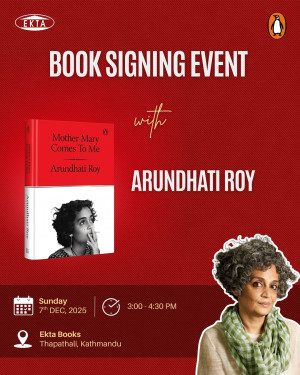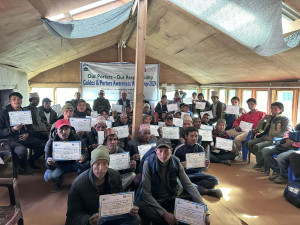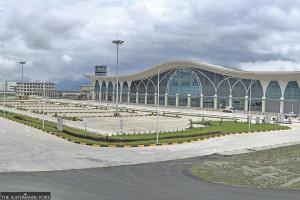Culture & Lifestyle
Panch Pokhari: Up the hills, into myself
The trek pushed me beyond my comfort zone, but it also gave me memories of calm lakes, warm fires, and kind strangers.
Timila Maharjan
I’ve loved nature and hikes since childhood, so trekking had been on my wish list for years, and for the past two, I’d been looking for an opportunity. So when I met my best friend’s cousin during Dashain and found out she was going to Panch Pokhari, I asked to join right away. A casual conversation turned into reality, and soon I was trekking with her and two friends I had never met before.
Amid the rush of Tihar, I prepared myself as a first-time trekker. I bought the essentials the night before and asked friends who had hiked the trail about the weather and hotels. In the end, I pulled everything together by borrowing gear from friends and even a few clothes from my dad. The night before, we discussed logistics over a video call—my first introduction to the two other friends I’d be trekking with.
The journey begins
In the morning, we started our journey by boarding a crowded local bus from Balkhu, mainly packed with trekkers—some even standing the whole way. I slept through most of the ride, waking up now and then to the shifting crowd. However, I remember the ride being dusty and bumpy, set against a backdrop of beautiful hills, scattered houses and open fields.
After five hours, we reached Chhimti, the starting point. We freshened up, applied sunscreen, crossed a suspension bridge, and faced a steep, forested, rocky uphill trail. Within minutes, I was breathless and questioning my life choices. Yet, the occasional cool breeze and short breaks calmed me.
After a few hours, we reached Tuppi Danda in the dark, but pressed on towards Tangu Kharka. That night, we listened to other trekkers’ travel stories while sitting in front of the fire, stargazing and sipping Tongba (a local alcoholic drink made from fermented millet).
.jpg)
Day 2: A test of willpower
We woke around 4:30 am, had coffee and biscuits, and left some items behind to lighten our load. The second day’s hike was supposed to be easier, but it wasn’t. After some flat trails and downhill paths, the steep uphills returned as we climbed toward Rato Mato and Chokhar Danda.
Despite the struggle, the autumn scenery was breathtaking; the vibrant red and yellow leaves carpeting the forest, the view of snow-capped mountains, the sound of the river, and the magical waterfalls.
Walking alone at times, I became fully present—taking long breaths, feeling my heartbeat, and appreciating my body’s strength. I understood why people trek; not just for the destination, but for the journey, the quiet moments, the exhaustion, the relief, and the self-talk. Trekkers passing by encouraged me to keep going and to enjoy the journey. The sense of community on the trail felt uniquely Nepali.
The brutal stretch: Nosyampati to Lauribina
The stretch from Nosyampati to Lauribina (which looks short from far away) was mentally and physically draining. Locals and trekkers gave mixed time estimates: 3, 4, or 6 hours. The red-roofed house of Lauribina looked close, but in reality, we had to cross multiple hills to reach it.
My ankles began hurting badly. A group of kind girls offered me a bandage, and while I applied pain-relief ointment on my ankle, I witnessed one of the most beautiful sunsets of my life. Reaching Panch Pokhari around 7:30 pm in the dark, using our phone torchlights, felt like a victory. That night I saw the Milky Way Galaxy band, something I’d only seen in photos. The hotel was packed, and we got a shared room to sleep in, but exhaustion put me out immediately.
That night, strangers showed incredible kindness—a trekker who turned out to be a pharmacist offered me painkillers, and another helped me contact a jeep driver. Their kindness showed why Nepal is famous for its hospitality.
Day 3: The final destination
The next day, I woke up to the sounds of alarms and whispers. We’d planned to watch the sunrise from the viewpoint, so we got up early and set out in the dawn light. The viewpoint was around an hour away from our hotel.
As we walked along the pond edge, I could hear thin ice sheets breaking under my feet. I kept stopping along the way, absorbed by the clear view of the mountains, the soft glow of the rising sun, and the sight of all five ponds below.
I reached the top just before sunrise. Although clouds blocked the sunrise, the mountains were the true highlight. You get a 360-degree view of the peaks, which makes you forget the exhaustion it took to get there. Locals say that during the monsoon, the hills burst into colour with wildflowers, and that’s why many prefer trekking during that season.
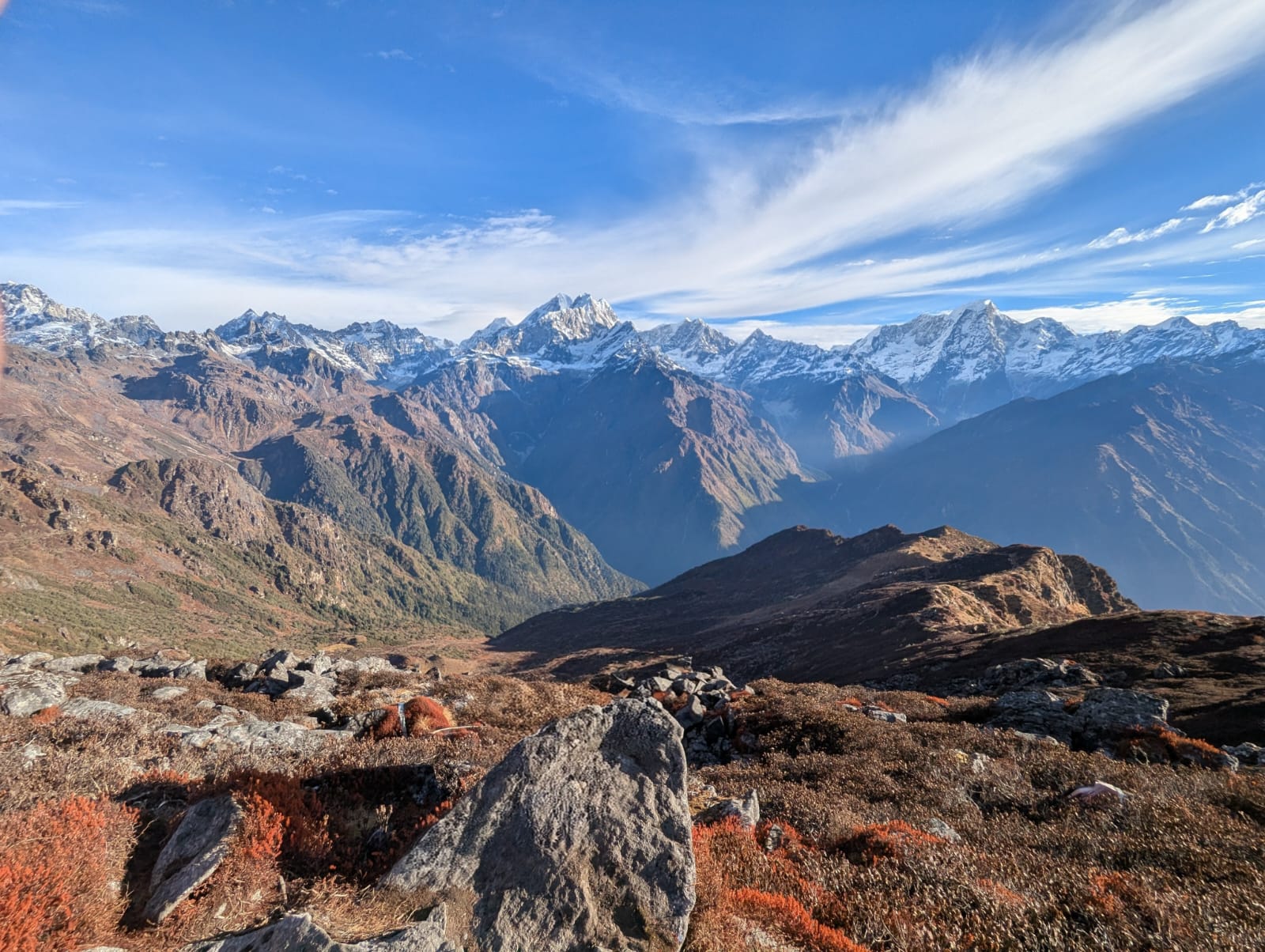
The painful descent
I thought descending would be easier, but halfway down, my toes began throbbing—thanks to my uncut nails. With no nail cutter and a steep trail ahead, I relied on my trekking stick. The magical autumn forest on the way up now seemed endless. By the time we reached Tangu Kharka, it was already evening, and we still had a long way to go.
After collecting our things in the hotel, a friend and I continued while the other two stayed behind. Eventually, we reached Deurali and checked into the first hotel we saw. I was too exhausted to go any further. With Wi-Fi and network access, we reserved a jeep and reconnected with trekkers who would join us in the jeep ride. Dinner by the fire and a bit of self-massage finally eased the day’s exhaustion before I collapsed into sleep.
Ending the trek with rain and snow
The next morning, I woke up to the sound of rain, and the surrounding hills were covered with fresh snow. Had we stayed an extra day, we would have seen Panch Pokhari covered in snow, but descending in such conditions would have been dangerous. After our friends who stayed behind arrived, we walked down. Eventually, we joined the jeep group and journeyed back to Kathmandu.
Memories and realisations
Although my body ached, my heart was full. Up there, my everyday life didn’t matter, and I felt a strange sense of peace.
I realised I wasn’t as strong as I believed, as I saw older people easily overtake me on the trail, which was humbling and inspiring. What touched me most was the kindness of strangers who shared their medicines, food, lent me their phones to call home, motivated me, and kept me company with their torchlights in the dark forest.
Locals offered us warm water, let us charge our phones, and handed us their phones when ours didn’t work. Such genuine gestures made the trek so much more meaningful. The only disheartening thing was the litter: trash left behind by trekkers along the trail, even though dustbins were available at several points.
In the end, it was an adventure that tested my limits, humbled me and left me with memories I will cherish for the rest of my life.




 8.12°C Kathmandu
8.12°C Kathmandu